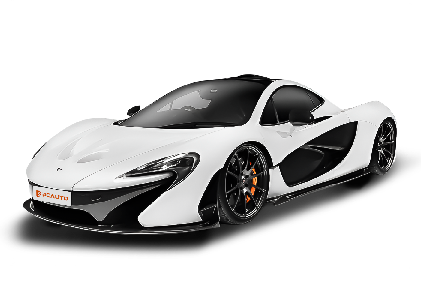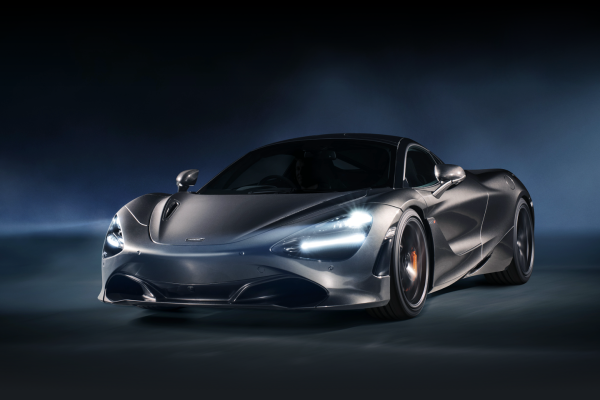Q
Why is McLaren P1 so expensive?
The high price of the McLaren P1 is due to its outstanding performance. It is equipped with a high-performance power system that can output super horsepower, bringing a rapid experience. In terms of design and manufacturing, it uses top-notch materials and advanced technologies, such as a carbon fiber body, reducing weight while ensuring strength. Its aerodynamic design provides powerful downforce during high-speed driving, enhancing handling stability. In addition, the high-end positioning of the McLaren brand, as well as its strategy of limited production, make the McLaren P1 a rare treasure, thereby leading to its high price.
Special Disclaimer: This content is published by users and does not represent the views or position of PCauto.
Related Q&A
Q
When was McLaren P1 released?
The McLaren P1 officially debuted in 2012. It is a supercar with exceptional performance and innovative design, garnering much attention in the automobile industry.
Q
When was the McLaren P1 released?
The McLaren P1 was officially released in 2012. It is a representative supercar, renowned for its excellent performance and innovative design. In the car market of Malaysia, such supercars are relatively rare, but still attract the attention and pursuit of many car enthusiasts.
Q
When was the McLaren P1 made?
The McLaren P1 debuted in 2012 and began mass production in 2013. It is a supercar with exceptional performance and innovative design.
Q
How fast is McLaren P1?
The top speed of the McLaren P1 can vary due to various factors. Generally speaking, its maximum speed can reach about 350 kilometers per hour. However, actual speeds may be influenced by road conditions, driving conditions, and vehicle tuning, among other factors. Such top speed is usually hard to reach on the road conditions in Malaysia, and driving at excessive speeds is illegal and dangerous.
Q
How much horsepower does a McLaren P1 have?
The horsepower of the McLaren P1 is typically around 903. This supercar performs excellently and is extremely powerful, making it one of the outstanding representatives in the automotive field.
Q
What engine does McLaren P1 have?
The McLaren P1 is equipped with a 3.8-liter twin-turbocharged V8 petrol engine, along with an electric motor that makes up a hybrid power system. This power combination gives the McLaren P1 an exceptionally impressive performance.
Q
How much is McLaren P1?
The price of the 2023 McLaren P1 is set at 7.078 million RM.
Q
Which car is the world's safest?
It's difficult to pinpoint exactly which car is the safest in the world when it comes to automotive safety. However, some brands and models have consistently performed well in terms of safety. For example, the Volvo XC90 is renowned for its strong safety features and advanced safety technologies, including a high-strength body structure, numerous airbags, and active braking systems. In addition, the Mercedes-Benz S-Class offers excellent safety performance, with a series of intelligent driver assistance systems and collision protection devices. However, the safety of a car depends not only on the vehicle itself, but also on the driver's driving habits and road conditions.
Q
Can a car reach speeds of 400 miles per hour?
Ordinary mass-produced cars typically cannot reach speeds of 400 mph. The top speed of most cars on the market ranges from 120 to 200 mph. Even high-performance supercars, such as the Bugatti Chiron and Koenigsegg Jesko, have top speeds far below 400 mph. Moreover, Malaysia's road conditions and traffic regulations also limit the speeds at which vehicles can travel.
Q
Which car is the fastest in the world?
Currently widely regarded as one of the fastest production cars in the world, the Bugatti Chiron Super Sport 300+ boasts a top speed exceeding 300 miles per hour. However, in Malaysia, the high-speed capabilities of supercars are often hampered by road conditions and regulatory restrictions. Among the high-performance models commonly seen locally, cars like the Ferrari 488 Pista and Lamborghini Huracan Performante exhibit impressive speed characteristics. Nevertheless, a vehicle's speed is influenced not only by its model but also by factors such as road conditions and driving skills.
Latest Q&A
Q
what type of car is porsche 911
The Porsche 911 is a legendary high-performance sports car from German automaker Porsche. It's that iconic rear-engined, rear-wheel or all-wheel drive luxury sportster that's been turning heads and setting standards since 1963. Here in Malaysia, the 911 has a massive following, and it's easy to see why. Drivers love its razor-sharp handling, the punch from its flat-six turbocharged engine, and that timeless design that blends classic cues with modern flair – it's absolutely perfect for cruising those coastal roads in Penang or Johor.
Porsche offers the 911 in a bunch of flavors to suit different tastes. There's the Carrera, which is the solid base model, then the Turbo for those who crave serious speed, and the track-focused GT3 for the ultimate driving purists. What really stands out about the 911, though, is how it manages to keep that classic rear-engine layout while still being totally usable every day – thanks to smart tech like the PDK dual-clutch gearbox and adaptive suspension. That balance is why it's such a big deal in Malaysia's premium sports car scene. And if you do take the plunge, Porsche's got your back with official service centers in cities like Kuala Lumpur, so you know you're covered.
Q
how many cylinders in a porsche 911
The Porsche 911, that iconic sports car staple, has seen its engine setups evolve across generations and models, but let's be real—most of 'em rock that flat-six (H6) heart. It's like the 911's DNA, right? Take the current 992 series: the Carrera and Turbo models? They're packing 3.0L and 3.7L twin-turbo flat-sixes, respectively. This layout isn't just for show; it drops the center of gravity big time, making the car stick to the tarmac like glue and handle like a dream. And man, flat-sixes are loved for how smooth they are and how they deliver that power efficiently—total game-changer when you're carving up Malaysia's twisty hill roads or putting the hammer down on the highway.
Now, if you're all about that raw, unfiltered experience, the GT3 lineup is where it's at. Those bad boys stick with naturally aspirated engines, still six cylinders, of course. The result? Power that builds nice and linear, and hitting those high revs? Pure thrills. For Malaysian enthusiasts, picking a 911 boils down to what you crave. Daily driver? Track toy? Whatever it is, there's a six-cylinder 911 out there ready to tackle it all.
Q
how fast is the porsche 911 gt3 rs
The Porsche 911 GT3 RS is a high-performance sports car built specifically for the track. It tops out at around 296 km/h and sprints from 0 to 100 km/h in just 3.2 seconds. That kind of pace comes courtesy of its 4.0-liter naturally aspirated flat-six engine, which cranks out 525 horsepower. Pair that with lightweight construction and an advanced aerodynamics package, and you’ve got a car that generates serious downforce and stability at high speeds.
For Malaysian petrolheads, this thing really shines on the circuit – it can even push its limits on challenging tracks like Sepang International Circuit. One thing to note though: while that naturally aspirated engine goes absolutely berserk in the upper rev range, it demands some tender loving care. Especially in Malaysia’s hot and humid climate, keeping a close eye on oil levels and the cooling system with regular checks is a must.
Also, the GT3 RS features a firm suspension setup, which is perfect for carving up track days but might feel a bit jittery on everyday roads. But hey, that’s all part of the package when you’re chasing ultimate handling. If this kind of high-performance machine floats your boat, keep an eye on rivals like the Lamborghini Huracán STO or Ferrari 488 Pista. They’re all track-focused beasts too, each with their own unique driving personalities and engineering philosophies.
Q
why is porsche 911 so expensive
The Porsche 911 commands such a premium price tag primarily because it's a masterful blend of the brand's rich heritage, exceptional engineering, and that one-of-a-kind driving feel we all crave. As Porsche's flagship, the 911 is built to incredibly high standards – think that rear-mounted flat-six engine and a chassis tuned to absolute precision. These aren't just tech specs; they're what make the 911 tick, but they also drive up the production costs. Then there's the extensive use of lightweight materials in the body, stuff like aluminum and carbon fiber, which further bumps up the price. Over in Malaysia, let's not forget the import duties and consumption taxes that can really inflate the final sticker price.
But here's the thing – the 911 also holds its value like a champ, thanks to its timeless design and consistently strong market demand. For Malaysian enthusiasts, it's more than just a sports car; it's a status symbol. That brand cachet and relative exclusivity play their part in keeping those prices up too. If you're into high-performance machines, the 911's unique allure is definitely worth a serious look. But hey, it doesn't hurt to shop around either. The Nissan GT-R or Mercedes-AMG GT, for example, offer similar thrills at different points in the price spectrum.
Q
how much is a pink porsche 911
In Malaysia, the exact price tag of a pink Porsche 911 hinges on the model year, specs, optional extras, and market demand. A brand-new base model typically starts between RM1 million to RM1.5 million. But if you're eyeing that custom pink paint job—think "Pink Pig" livery or special hues like Rubystar Neo—be prepared to shell out an extra RM50k to RM150k for the paint option.
For used cars, a 3- to 5-year-old pink 911 will likely set you back around RM700k to RM1 million. However, rare colorways or limited editions can command a 20%+ premium. It’s worth noting Porsche’s Exclusive Manufaktur program lets owners personalize exterior colors and interiors—these highly customized rides often hold more value and have stronger collector appeal.
Malaysian buyers should also factor in import duties (roughly 105%-200% based on engine displacement), GST, and AP permit costs—these can easily double the final on-road price. If you’re planning to hold onto it long-term, buying through official Porsche Malaysia channels is recommended to secure full warranty coverage. While special-colored cars might take longer to sell when you decide to part ways, their unique shades often translate to better retained value among specific buyer circles.
View More



















Pros
Cons